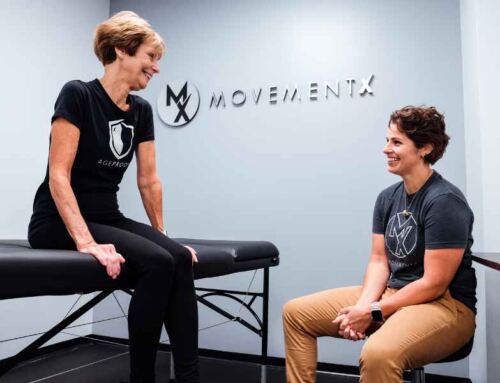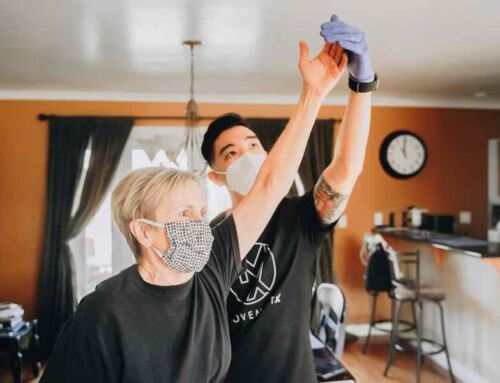An easy answer to this question is that you should choose physical therapy whenever you have an issue that is making body movement difficult or when something makes you think twice about moving.
It should be that simple and, for many of you reading this article and seeking this particular information, it is that simple.
You understand what I’m saying because you’ve experienced it firsthand as the physical therapist, referring physician, or patient who saw incredible results simply by learning what is going on and why.
But exactly how do you manage the movement issue at hand? Let’s talk about it.
Think Conservative First
Many of us in the 21st century don’t understand the importance of trying conservative interventions first.
After playing college basketball, I was under the impression for many years that I needed to be “fixed” by surgery, injections, and/or medications for various knee issues and chronic lower back pain. I now wish I had seen a physical therapist at least once during this time, but I didn’t until I was struggling being told to take opioids for post-surgery pain for almost 3 months.
In that first visit with my physical therapist, his simple instruction was enough for a light to turn on in my brain. The pills that physicians kept giving me—and I kept taking because it said to—were not going to actually fix my problem.
My problem was lack of movement or proper movement. A pill cannot move for me.
Just as I did, many people today seek care for movement-related issues from health practitioners who did not receive substantial movement system education in their curriculum in medical school. When you receive care from someone who learned about emergency/trauma care, pharmaceuticals, surgical interventions, injections, and diagnostic imaging, your treatment ends up involving pills, surgery, shots, and scans. This issue has played no small part in leading us to where we are today—struggling with prevalent chronic diseases and the opioid epidemic.

Learn About Pain Science
Instead, people in pain should be tuning into the pain, exploring what it might mean, and how to address the underlying issue (or usually issues), as well as when you should seek professional intervention. When we don’t, our brains interpret this as a potential threat to our system. It begins to learn this pathway and how it is important for protection—whether it actually is or actually isn’t. This is when acute pain from an injury evolves into chronic pain.
When a physical problem exists in the body which is not the result of an acute traumatic incident (car accident, fall, etc), first consulting with and seeking care from a physical therapist can lower costs by 72%. Seeing a PT first may also shorten the length of time between the onset of your movement system issue and the return to your prior level of function.
At MovementX, rather than helping people live longer with chronic disease, our physical therapists strive to prevent chronic disease in the first place through enabling healthier movement.

Trust the Experts in Human Movement
In all 50 states in the US, you have direct access to doctors of physical therapy to help you move your best so you can live your best.
Working with your physical therapist, you’ll be able to identify various movement faults and inefficiencies in your body’s movement system. Your PT will be able to safely determine whether or not a movement system issue is present and differentiate those issues from others that require more intensive medical intervention or other assistance from chiropractors, massage therapists, or osteopathic physicians.
That said, no two physical therapists or physical therapy clinics are alike. With tremendous administrative burden from insurance companies, narrowing cost margins for operations, and demanding work schedules, already high rates of burnout across the physical therapy profession continue to increase. At MovementX, we have eliminated as many of those burdens, barriers, and burnout sources to ensure your physical therapist is empowered to take great care of you.
Rather than expecting crowded waiting rooms, double-booked sessions, aides, ice packs, and rushed appointments, we want you to expect the best. We want you to feel listened to, cared for, and confident that you’re on a clear path to healthier movement.
Conclusion
If you have an issue that is making body movement difficult or something is making you think twice about moving at all, work with a physical therapist. The results you achieve can and will be life-changing. Request care with us today.
References
1. Fritz JM, Brennan GP, Hunter SJ. Physical therapy or advanced imaging as first management strategy following a new consultation for low back pain in primary care: associations with future health care utilization and charges. Health Serv Res. 2015;50(6):1927-1940.
About the Author
Dr. Emily Harmon is a physical therapist with MovementX in Arlington, VA. She was born and raised in Arlington with family roots there dating back to the 1800s. Emily Harmon has a love for the neurological aspects of the human body and finds significant importance in incorporating a whole-body approach with every patient. She works with people of all ages, abilities, and conditions to help them move their best so they can live their best








